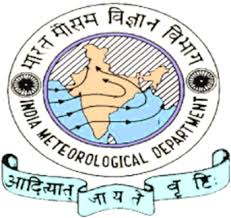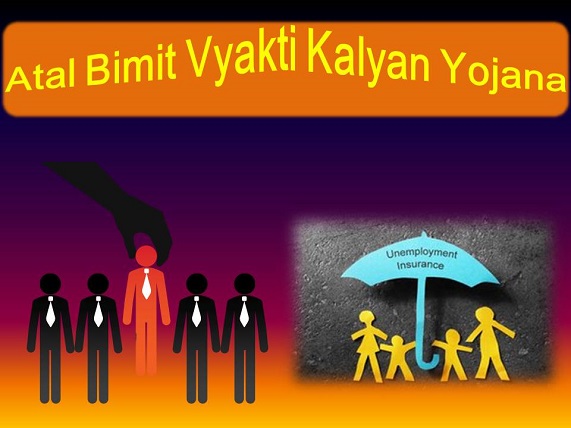
PIB News Update: The Cyclone Warning Division of the India Meteorological Department (IMD), has release a report on the Cyclonic Storm ‘BUREVI’ over the Bay of Bengal during 30th November – 05th December 2020. The salient features of the Report are:
Brief Life History:
● The cyclonic storm, ‘Burevi’ originated as a Low Pressure area in the equatorial easterly wave over South Andaman Sea and adjoining areas of Southeast Bay of Bengal & Equatorial Indian Ocean on 28th November 2020, which became a Well Marked Low pressure area over Southeast Bay of Bengal & adjoining areas of South Andaman Sea and Equatorial Indian Ocean on 29th.
● Under favourable environmental conditions, it concentrated into a Depression in the early morning (0530 hrs IST / 0000 UTC) of 30th November 2020 over Southeast Bay of Bengal.
● Moving nearly westwards, it intensified into a Deep Depression in the early morning of 01st December 2020 over Southwest and adjoining Southeast Bay of Bengal.
● Subsequently it moved west-northwestwards and intensified into Cyclonic Storm ‘Burevi’ over Southwest Bay of Bengal in the evening (1730 hrs IST / 1200 UTC) of 01st December 2020.
● Continuing the west-northwestward movement, it crossed Sri Lanka coast close to north of Trincomalee near Lat. 8.85°N and Long. 81.0°E between 2230 and 2330 hrs IST (1700 & 1800 UTC) of 2nd December 2020 as a Cyclonic Storm with maximum sustained wind speed of 80-90 kmph gusting to 100 kmph.
● Moving across northern parts of Sri Lanka, it emerged into Gulf of Mannar in the morning and lay centred close to Pamban around noon (1130 hrs IST / 0600 UTC) of 03rd December. It crossed Pamban area around 0800 UTC of 3rd. Continuing to move west-northwestwards, it weakened into a Deep Depression over the same region in the evening (1200 UTC) of 03rd December.
● Thereafter the movement slowed down significantly and it remained practically stationary over Gulf of Mannar close to Ramanathapuram district coast for nearly 18 hours and further weakened into a Depression in the evening of 04th December over the same region.
● Further remaining stationary at the same place for subsequent 18 hours, it gradually weakened into a well marked Low pressure area around noon (1130 hrs IST / 0600 UTC) of 05th December.
● This system during its initial stage as a Low pressure area had caused fairly widespread rainfall with isolated very heavy falls over Andaman & Nicobar Islands on 29th November. It caused widespread rainfall with heavy to very heavy falls at a few places & extremely heavy (≥ 20 cm) falls at isolated places occurred over Tamil Nadu during 02nd – 04th December.
A preliminary analysis indicate that due the prevailing middle to upper tropospheric environment with a COL region due to two anticyclones on either side to northeast and northwest of the cyclone over Gulf of Mannar, the system remained practically stationary for about 36 hrs. Further persistence over this land-locked region of Gulf of Mannar led to cooling of Gulf of Mannar through continuous rainfall and upwelling over the region and hence cooling of the sea region. Further the increased wind shear and interaction of land surface favoured the weakening.
Monitoring of the System
IMD mobilised all its resources to track the system and regular warnings w.r.t. track, intensity, crossing point & time, associated severe weather and adverse impacts & suggested actions were issued to concerned central and state disaster management agencies, print & electronic media and general public. Regular advisories were also issued to WMO/ESCAP Panel member countries. Its genesis, movement and associated adverse weather could be predicted with actionable accuracy by IMD.
Forecast Performance:
· The extended range outlook issued on 26th November, indicated that there is a ‘High’ (68 – 100 %) probability for cyclogenesis over southwest Bay of Bengal during the second half of week (27th November – 03rd December). Actually, the Depression formed over southeast BoB on 30th November.
· First information that a low pressure area would form over southeast Bay of Bengal around 28th November with high (76-100%) probability of it’s intensification into depression around 30th was issued in the Tropical Weather Outlook at 1130 hrs IST of 27th November. Actually low pressure area formed over south Andaman Sea on 28th November (0830 hrs IST) and it concentrated into a depression over southwest Bay of Bengal on 30th (0530 hrs IST).
· The information that a low pressure area would form over southeast Bay of Bengal around 29th November was also provided in the Press Release issued at 1600 hrs IST of 27th November. All warnings w.r.t. heavy rainfall, strong wind, state of Sea and advisory for fishermen was issued in the Press Release. Extremely heavy rainfall warning over Tamil Nadu & Puducherry on 2nd & 3rd December was also indicated in the Press Release. Special bulletins were issued by Area Cyclone Warning Centre, Chennai and Cyclone Warning Centre, Thiruvananthapuram also.
· In the first Press Release issued on 27th November, it was also indicated that the system would intensify further and move towards Tamil Nadu-Puducherry coasts.
· The bulletin issued at 0930 hrs IST of 30th, indicated that the system would intensify upto cyclonic storm stage, cross Sri Lanka coast between 7.5-9.0 degree N around evening of 2nd December. It was also indicated that the system would emerge into Gulf of Mannar and Comorin area on 3rd December morning. Actually, the system crossed Sri Lanka coast as a cyclonic storm near 08.85 N and Log 81.0 E during 2230 – 2330 UTC of 02nd December 2020. It emerged into Gulf of Mannar during forenoon of 3rd December.
· The warnings were further updated and at 0210 hrs IST of 1st December, it was indicated that the system would emerge into Gulf of Mannar- Comorin area on 3rd December morning and move towards south Tamil Nadu coast.
· The warnings were further updated and at 1430 hrs IST of 1st December, it was indicated that the system would emerge into Gulf of Mannar and adjoining Comorin area on 3rd December morning and cross south Tamil Nadu coast between Kanniyakumai and Pamban around early morning of 4th December.
· At 1130 hrs IST of 2nd December, it was further indicated that the system would be centered very close to Pamban around noon of 3rd December and it’s impact over Ramanathapuram district will commence from 3rd December forenoon.
(India Meteorological Department (IMD) & RSMC New Delhi, Ministry of Earth Sciences, duly acknowledge the contribution from all the stake holders who contributed to the successful monitoring, prediction and early warning service of the system. We specifically acknowledge the contribution from Indian Space Research Organisation (ISRO) and all Sister organizations of Ministry of Earth Sciences including Indian Institute of Tropical Meteorology (IITM), Pune, National Centre for Medium Range Weather Forecasting Centre (NCMRWF) NOIDA, National Institute of Technology (NIOT) Chennai & Indian National Centre for Ocean Information Services (INCOIS). The support from various Divisions/Sections of IMD including Area Cyclone Warning Centres Chennai, Cyclone Warning Centre Thiruvananthapuram & Numerical Weather Prediction (NWP) Division, Information System & Services Division (ISSD) and Satellite and Radar Division at IMD HQ New Delhi is also duly acknowledged for monitoring and predicting the system.)
Kindly find attached the preliminary report on the system. The same is also available on IMD website https://mausam.imd.gov.in/imd_latest/contents/cyclone.php and RSMC website http://www.rsmcnewdelhi.imd.gov.in/images/pdf/publications/preliminary-report/burevi.pdf
Please Click here for the complete report.
Kindly download MAUSAM APP for location specific forecast & warning, MEGHDOOT APP for Agromet advisory and DAMINI APP for Lightning Warning.







Leave a Reply
You must be logged in to post a comment.